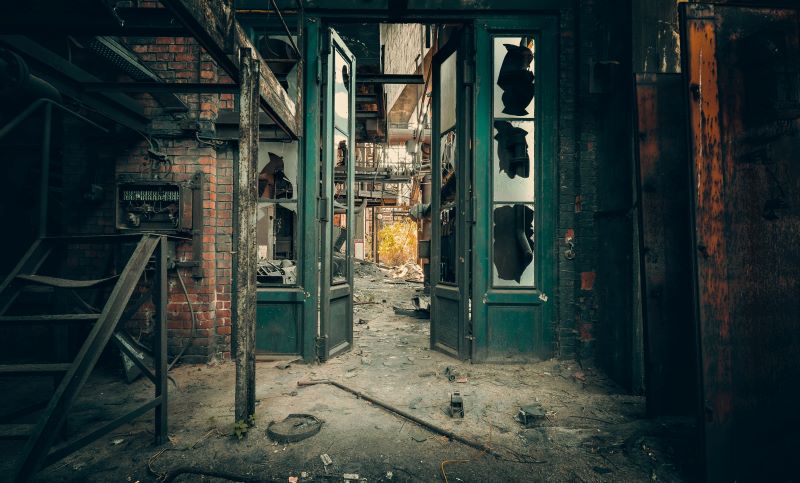VISUAL PROMPT
by Taton Moise @Unsplash

As your protagonist walks through the ruins of their home city, they begin to regret the decisions they made that led them here...
A Walk Through Downtown
Thomas kept looking down at the old paper map, and looking back up at the horizon, and then back down at the map. The map showed a small town, with roads weaving between blocks of buildings, some of which he knew. He remembered the old coffee shop where his sister worked, the small building he learned how to drive in, and the school with the large field he played baseball in. It was a map of Thomas old hometown he grew up. When Thomas looked up from the map, all he could see was stone. The horizon stretched out like infinity, and there weren’t even any mountains to strain a focus for. As far as the eye could see was all just a flat stone surface, stretching into the distance.
“... This doesn’t make sense,” thought Thomas. “My house is supposed to be right here.”
Thomas looked up and shielded his eyes from the hot summer sun. He wanted to get a sense for its position, and after checking his watches and navigational guides it only confirmed what he already knew: he was in the right spot. This was home.
Thomas tried to use his map and compass to simulate his usual routes around town. There were no landmarks, but maybe if he looked around he might find something to make this trip worthwhile. It cost a lot of money just to travel here, so any souvenir, even from something he couldn’t recognize or have any emotional attachment to might make it all worthwhile.
“This is where that small parking lot used to be, and over there is where the Tai-food restaurant was ... or was the parking lot down that way? No. No, I’m pretty sure this is where it was, I think.”
Thomas decided he would go to where his old school used to be. It was a route he felt very familiar with since he had walked it almost every day for many years of school. He walked down the street (or where a street used to be), walked straight to the old train station (or where he think used to be a train station), down an underpass (which didn’t exist anymore) and then up another street to get to where he went to school. The trip normally takes twenty to thirty minutes, but Thomas took almost two whole hours trying to get the right landmarks, turns, and distances so that he’d be right where his old school used to be, but nothing was there. Nothing was anywhere. He made more trips, further and further. The movie theatre he had his first kiss in: gone. The graveyard his dad cried over a lost friend in: gone. He even tried to find the large sugar beet factory, the largest landmark in his hometown, but that was gone too. It was all replaced by flat stone lit by a burning hot sun. If it weren’t so bright, Thomas could’ve sworn that this was hell, his own personal hell.
